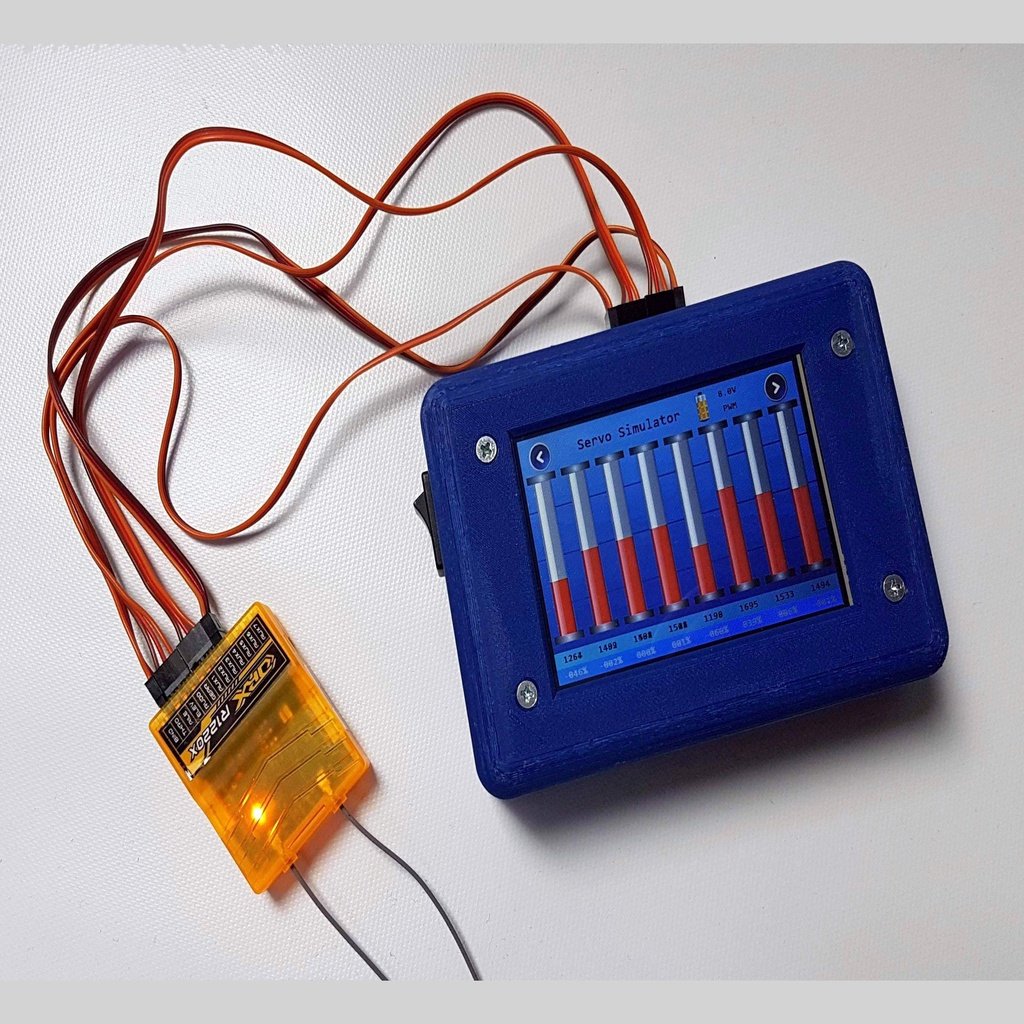
Servo Simulator
thingiverse
Sometimes it's challenging to grasp what an RC receiver truly outputs across each channel because transmitter programming can be quite unusual, and different brands often program their mixers uniquely. Even more confounding is that various brands use distinct programming methods. This Servo Simulator displays the output of an RC receiver in microseconds, percentages, and as graphical bars/servos. The valid signal must fall between 700-2300us, assuming 1000us=-100%, 1500us=0%, and 2000us=+100%. It utilizes an Arduino Nano to evaluate up to eight RC signals and display them on a Nextion LCD. The power supply is a 2S Lipo via voltage regulator. You can use other supplies, but then the battery icon will not be valid. Connect the PWM outputs to channels one through eight. CPPM and SBUS options are scheduled for future implementation. Clicking on the bars changes their colors, while clicking on the servos adjusts the angle of a rudder horn. Clicking on [nor]/[inv] toggles the servo direction. To assemble this project, you'll need the following components beyond the printed case and screws: - One Arduino Nano - One Nextion Display NX4832T035 - A voltage regulator for the 5V supply of the Nextion LCD, such as the TRACO POWER TSR-1, along with two Elcos (4.7uF) and one inductor (8.2uH), as per the schematic - One resistor (3k83) - One resistor (26k1) - A 3x12 angled pin header (remove two positions to separate PWM/CPPM/SBUS) - A prototype PCB for mounting electronic components - One Marquardt switch - One 2S Lipo battery, such as an 800mAh model The wiring is straightforward, allowing you to use a prototype PCB. For more information on routing, refer to the KiCAD source or the Picture ServoSimulator_PCB.png. Detailed instructions can be found in the schematic. Upload the .tft file to the Nextion LCD and upload the Arduino sketch to the Nano for an enjoyable experience!
With this file you will be able to print Servo Simulator with your 3D printer. Click on the button and save the file on your computer to work, edit or customize your design. You can also find more 3D designs for printers on Servo Simulator.
